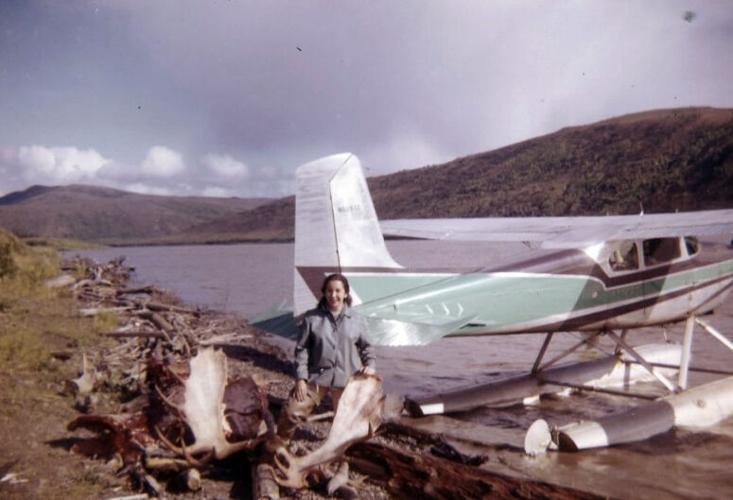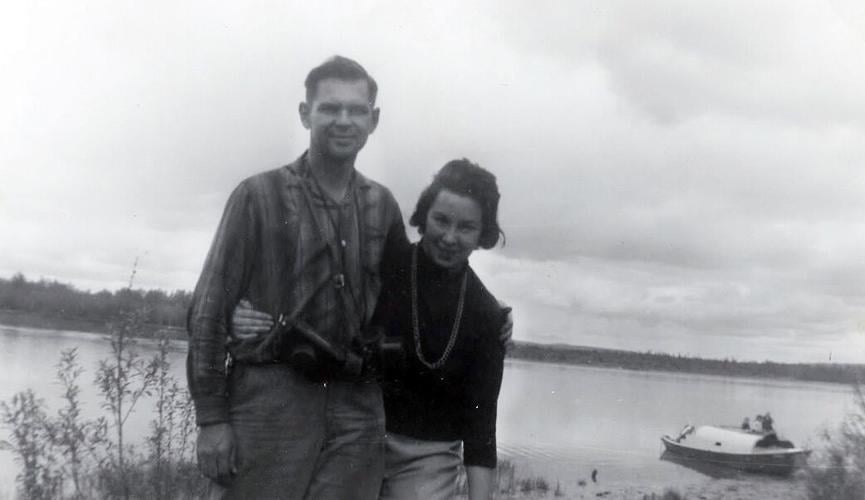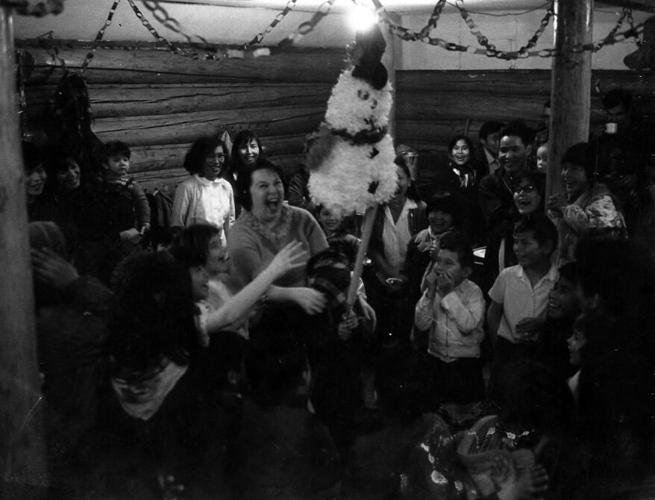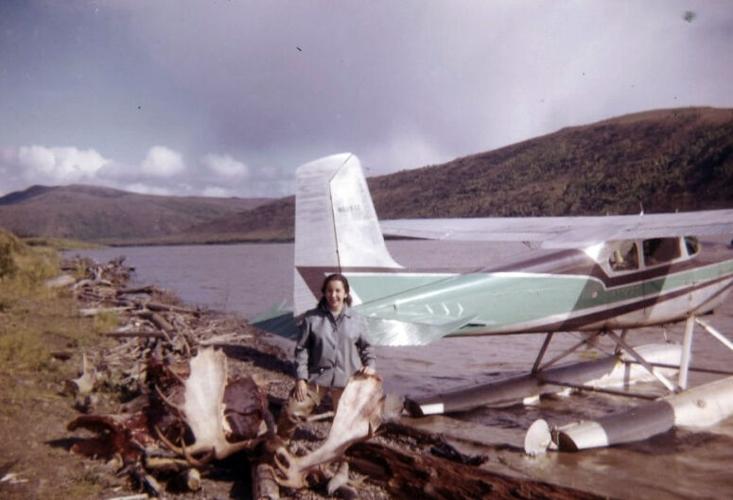Editor’s note: This is the first of several pieces on Diane Carpenter and her impact on Alaska.
Last month, five large boxes were hand-carried from Alamos, Mexico, across the U.S.-Mexico border to Tucson, Arizona. There, at a local UPS store, they were reboxed before I received the phone call I had been looking forward to for over a year: “They’re ready to ship.”
These boxes, containing over 600 documents covering nearly 35 different subjects related to the economic and social development of early statehood and rural Alaska, are the personal historical archive of Diane Carpenter — a former longtime resident of Bethel, educator, public servant, Bush pilot, mother, community organizer, social activist and significant shaper of Alaska’s early statehood years.
Although most people outside the Bethel region have never heard her name, Diane Carpenter’s contributions to Alaska — especially to the Yukon-Kuskokwim Delta — were immense. The arrival of her collection back in Alaska was six years in the making and made possible by a dedicated team of friends and family in both Alaska and Mexico, and of course, by Diane herself.
I first encountered Diane’s name while conducting research for Gwen Holdmann, founding director and chief scientist at the Alaska Center for Energy and Power — an applied research group at the University of Alaska Fairbanks. Gwen was interested in the work, politics and people involved in the formation of the Alaska Village Electric Cooperative (AVEC) — a cooperative utility unlike any other in existence. Although the early years of the organization were well documented in the literature, there was almost nothing published about how the organization came to be incorporated back in 1968. AVEC currently serves 59 remote community microgrids in a geographic region larger than any other cooperative utility in the world.
Most cooperative utilities interconnect their customers through a common transmission network. That was not possible for AVEC due to the immense geographic distances involved. Instead, AVEC owns and operates individual powerhouses and distribution systems in each of these non-road-connected communities, and has been able to navigate operational challenges thanks in no small part to the work of the organization’s founders in formulating the innovative structure and culture that continues to define AVEC today.
Early in January 2024, I was poring over AVEC-related materials at the Alaska and Polar Regions Collections and Archives at the Elmer E. Rasmuson Library when I came across a letter Diane had written in 1967 to Richard Hausler, a deputy administrator for the Rural Electrification Administration (REA) in Washington, D.C. In the letter, she provided comprehensive feedback on a preliminary plan to electrify rural Alaska. Her language was powerful; her understanding of and advocacy for rural Alaska was deep. “The report did not state how much Native people themselves would be involved in the organization and operation of the cooperative,” she writes. “Many of the Native people are beginning to resent their having little or no say regarding programs that affect them; no matter how good the program is, they feel — quite rightly, I think — that their views should be heard and considered.”
She goes on to discuss the organizational structure, local involvement and empowerment, training needs, and much more to help create the rural utility that would eventually become AVEC. She closes by saying, “There is no question but that these efforts are worthwhile. My husband and I will be most happy to help further them in any way we can. Best regards. Sincerely yours, Diane Carpenter. Stony River.”
At the time, the vast majority of remote and rural communities did not have electricity due to many geographic, economic, and political challenges. The lack of power service severely limited economic opportunities for rural Alaskans. Despite many individual community efforts to apply for federal electrification funding, their applications were often denied, citing the enormous construction costs and lack of a local economy to repay the loan and sustain continued service.
“Who is this woman?” I asked myself. Mind you, in 1967 the Civil Rights Act was only 3 years old, race riots occurred in cities throughout the United States, and women faced legal discrimination in trying to open their own bank accounts for another seven years.
- With assistance from the archivist, I made a hasty scan of the letter and sent it to Gwen, who then searched online, found Diane’s memoir In the Winter of the Orange Snow, bought it in town the next day, and read it. Late that night, I received this text from Gwen: “This woman’s life was insane.” Gwen meant that in the best way possible, as she herself is no stranger to outdoor adventure and innovative problem-solving while rearing a young family.
We reached out to Diane’s publisher the next morning and were delighted to learn that not only was Diane still alive at the age of 92, but she was working on a second memoir — this one covering the years she homesteaded in Stony River — the years she helped form AVEC. The publisher connected us with Diane directly, and she graciously agreed to meet virtually from her home in Alamos, Mexico.
In our first meeting with Diane and her team of supporters, we learned that not only was Diane still an articulate champion of rural Alaska, but she had kept meticulous records from her years in the Y-K Delta. Her personal archive captures both her unique perspective of life in mid-century rural Alaska and a broader historical moment: a transitional period between achieving statehood, the early efforts of statebuilding, the discovery of oil on the North Slope, the development of TAPS, and the resulting oil wealth that has shaped so much of our state’s economy ever since.
Diane had been working closely with the library in Bethel, as well as other close friends and contacts in Alaska, to find a permanent home for her archive where it could be digitized and made accessible to all. Gwen and I both felt strongly about supporting the project however we could, and over the next year, we developed a plan in partnership with Diane, her team in Alaska and Mexico, and the Alaska and Polar Regions Collections and Archives at the UAF Elmer E. Rasmuson Library.
During this time, we had the pleasure of getting to know bits and pieces of Diane’s larger life story. Diane, an expert community organizer, was instrumental in creating many valuable programs serving Alaskans — especially Alaskan women — including the Tundra Women’s Coalition in Bethel. But it was her work coordinating the regional, state, and federal efforts that resulted in the successful formation of AVEC that she was most proud of. Through grassroots local organizing, pooling of resources, substantial state and federal cooperation, and a thoughtful, deliberate organizational structure designed to foster community buy-in, Diane and her collaborators created a lasting and innovative utility that provided essential power services to communities across Alaska when no one else would. Willie Hensley served as AVEC’s founding president. Diane was VP.
When recently asked why she became so involved in early rural electrification efforts, Diane was quiet and reflective for a moment before replying, “Because I could ... and if I didn’t, who would?” In interviews, it is clear that Diane’s deep affection and respect for the communities, families, and people of Western Alaska motivated her work. Her memoir and personal stories time and again tell of a need brought forth by the community — and Diane rising (and organizing) to meet it. She led the incorporation of townships to create local schools so children could stay in their villages; coordinated the construction of powerhouses and airstrips; founded women’s shelters and safe houses; and advocated for more equitable health and safety services for rural communities — just to name a few.
After a long battle with cancer, Diane passed away peacefully at home in Alamos last month, surrounded by family and friends. Her story exemplifies both the can-do spirit of the time and her own dogged determination and work ethic. Diane accomplished so much in her lifetime, but perhaps her most lasting legacy is her lived example of the power we each have to organize the meaningful and lasting investments we want in our own communities — that collaborative innovation, determination, and political will can overcome seemingly impossible challenges.
Diane’s archive is currently being digitized and processed, and should be available to the public for research within the next twelve months. Please reach out to the UAF archives for more information at UAF-APR-reference-Service@alaska.edu. For information about forthcoming published research on AVEC, contact Carolyn Kozak Loeffler at cjkozak@alaska.edu.















